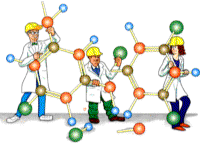1 - Will that be "capping and incineration" or "incineration and capping" sir?
Having read the flyer and the workbook, I'm given virtually NO options to pick from if
I don't want incineration and capping. Yet, if memory serves me, there was great public
oposition to these 2 options in the past. So why are they again before us as options!?
|
2 - So why the rush on the "public input" stage?
Eight weeks is not much time to get this done. Can't help but be suspicious that
there may be hidden agenda items that demand this tight time line.
This may be our last kick at the can, and we need to get involved before the opportunity slips by.
|
3 - ALL workbook options have proved reliable, practical and effective on other sites?
This flies in the face of what I'm reading daily in trusted journals on the Internet. One retired US inspector
damned incineration as a losing proposition because of HUMAN failures rather than technical flaws. Incineration just
does not work at 99.999% efficiency on a daily basis. It often works flawlessly for the "official test phase" only.
Once the process is in place, safeguards and inspections are woefully inadequate.
|
4 - DIOXINS are among the deadliest chemicals known to man!
All incinerators produce Dioxins and Furans. These chemicals are toxic, cumulative and persistent;
they poison you, build up in the fatty tissue of our bodies and it's hard to get rid of them.
Check out the Fox River Watch Web Site for some scary
info on dioxins.
|
5 - Our local environmental watchdogs don't seem pleased with JAG's cleanup options
Individuals directly adjacent to the sites don't seem too thrilled with the options. In a recent
press release the Sierra
Club has called the options ineffective and unacceptable, and has called for a "Full Panel Review"
under the Canadian Environmental Assessment Act (CEAA)
|
6 - Eco Logic's Hydrogen Reduction process (GPCR) looks promissing!
A 2-phase process would see "Thermal desorbtion" separate contaminants from the soil, while "Hydrogen Reduction"
would then destroy the contaminants (i.e. PCBs, PAHs, etc.) The key factor here is that, unlike incineration,
GPCR presents no risk of forming dioxins or furans. I phoned Beth Kummling of Eco Logic a few days ago. She assures me
that they could do the job within the cost ranges and timeframes proposed by JAG. As of my phone call, Eco Logic
had not heard from JAG in nearly 2 years.
Click here to view Kummling's encouraging email (Feb. 26, 03).
Or here to view Kummling's follow-up email on costing (Mar. 3, 03).
|
7 - Misleading statements in the JAG workbook discovered by local environmental activist Marlene Kane
have certainly underlined the haste with which JAG is pursuing this "public input" stage
of the remediation process. This rather small booklet which has as many graphics as it does
text should have been dissected "line by line" by JAG staff and volunteers BEFORE it was
printed and released to the public. The seriousness of the error is hardly the issue here;
for one now has to wonder about JAG's attention to detail in so many other critical areas.
It's time for more knowledgable members of the general public (scientists, engineers, etc.)
to get out their "fine tooth combs" and dig into these remediation proposals. The clock
is ticking!
|


